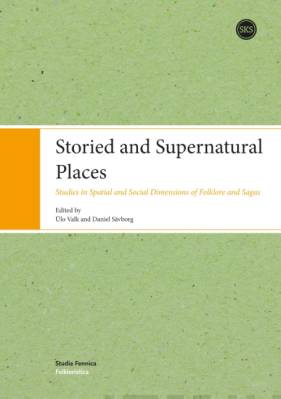Storied and Supernatural Places — Studies in Spatial and Social Dimensions of Folklore and Sagas
Valk, Ülo; Sävborg, DanielProduct information
| Title: | Storied and Supernatural Places — Studies in Spatial and Social Dimensions of Folklore and Sagas | ||
| Authors: | Valk, Ülo (Editor) Sävborg, Daniel (Editor) |
||
| Product number: | 9789522229175 | ||
| Product form: | Paperback | ||
| Availability: | Delivery in 7-14 workdays | ||
| Price per piece: | 45,00 € (39,47 € vat 0 %) | ||
|
|||
| Publ. product code: | 1330651 |
| Publisher: | Suomalaisen Kirjallisuuden Seura |
| Series: | Studia Fennica Folkloristica 23 |
| Edition: | 2018 |
| Publication year: | 2018 |
| Language: | English |
| Pages: | 281 |
| Product family: | Mythology and Religion Studia Fennica Folkloristica Books in English |
| Finnish library classification: | 81 KANSANRUNOUS |
| YSO - General Finnish ontology: | paikka, tila, paranormaalit ilmiöt, selittämättömät ilmiöt, yliluonnolliset olennot, kansanperinne, kansanusko, uskomukset, kerronta, kertomusperinne, kansantarinat, uskomustarinat, myytit, saagat, folkloristiikka, tutkimus, tutkimushistoria |
| Key words: | Nordic and Baltic-Finnic folklore, the supernatural, place-lore, Old Norse literature, Legends |
This collection of articles addresses the narrative construction of places, landscapes and their supernatural dimensions, the relationship between tradition communities and their environments, and the spatial conditions for encounters with the supernatural as they are manifested in European folklore and in early literary sources, such as the Old Norse sagas.
Articles in the book discuss places cursed and sacred, churches, graveyards, haunted houses, cemeteries, grave mounds, hill forts, and other tradition dominants in the micro-geography of the Nordic, Baltic and Baltic-Finnic peoples. It emerges that places accumulate meanings as they are layered by stories and memories about personal experiences. In addition to the local dimension of place-lore, the book scrutinizes the history of folklore studies, its geopolitical dimensions and its connection with nation building. It also sheds light on the social base of folklore and examines vernacular views of legendry and the supernatural.
Articles in the book discuss places cursed and sacred, churches, graveyards, haunted houses, cemeteries, grave mounds, hill forts, and other tradition dominants in the micro-geography of the Nordic, Baltic and Baltic-Finnic peoples. It emerges that places accumulate meanings as they are layered by stories and memories about personal experiences. In addition to the local dimension of place-lore, the book scrutinizes the history of folklore studies, its geopolitical dimensions and its connection with nation building. It also sheds light on the social base of folklore and examines vernacular views of legendry and the supernatural.





